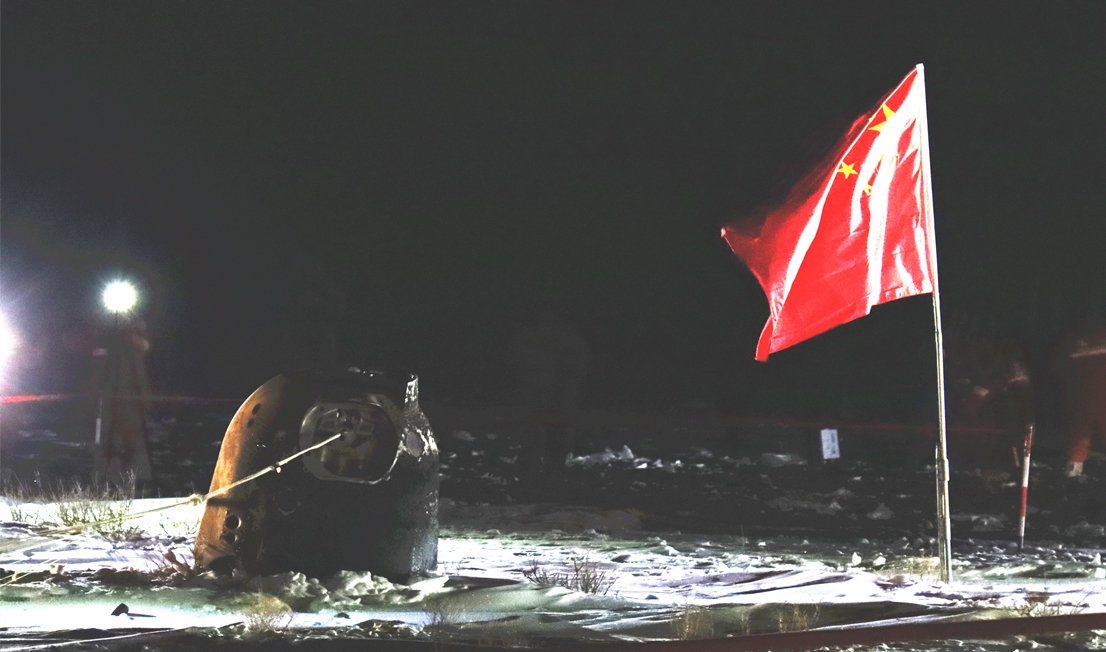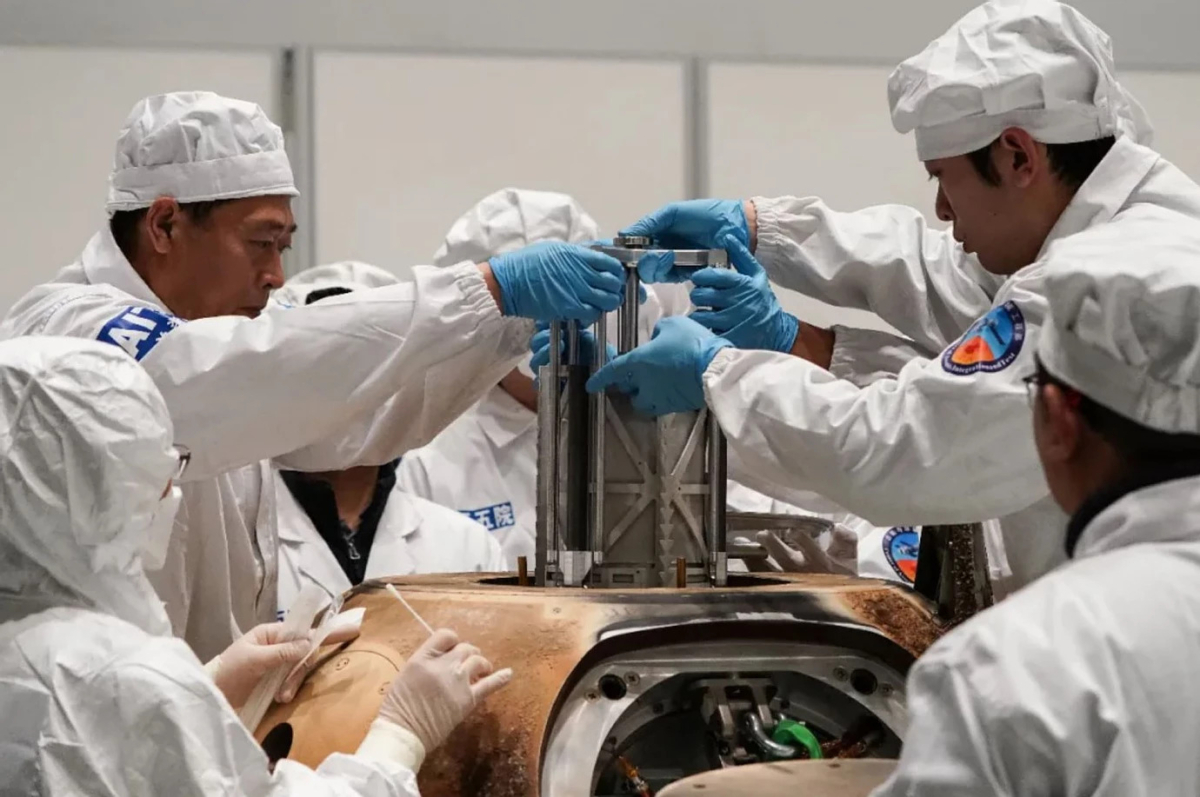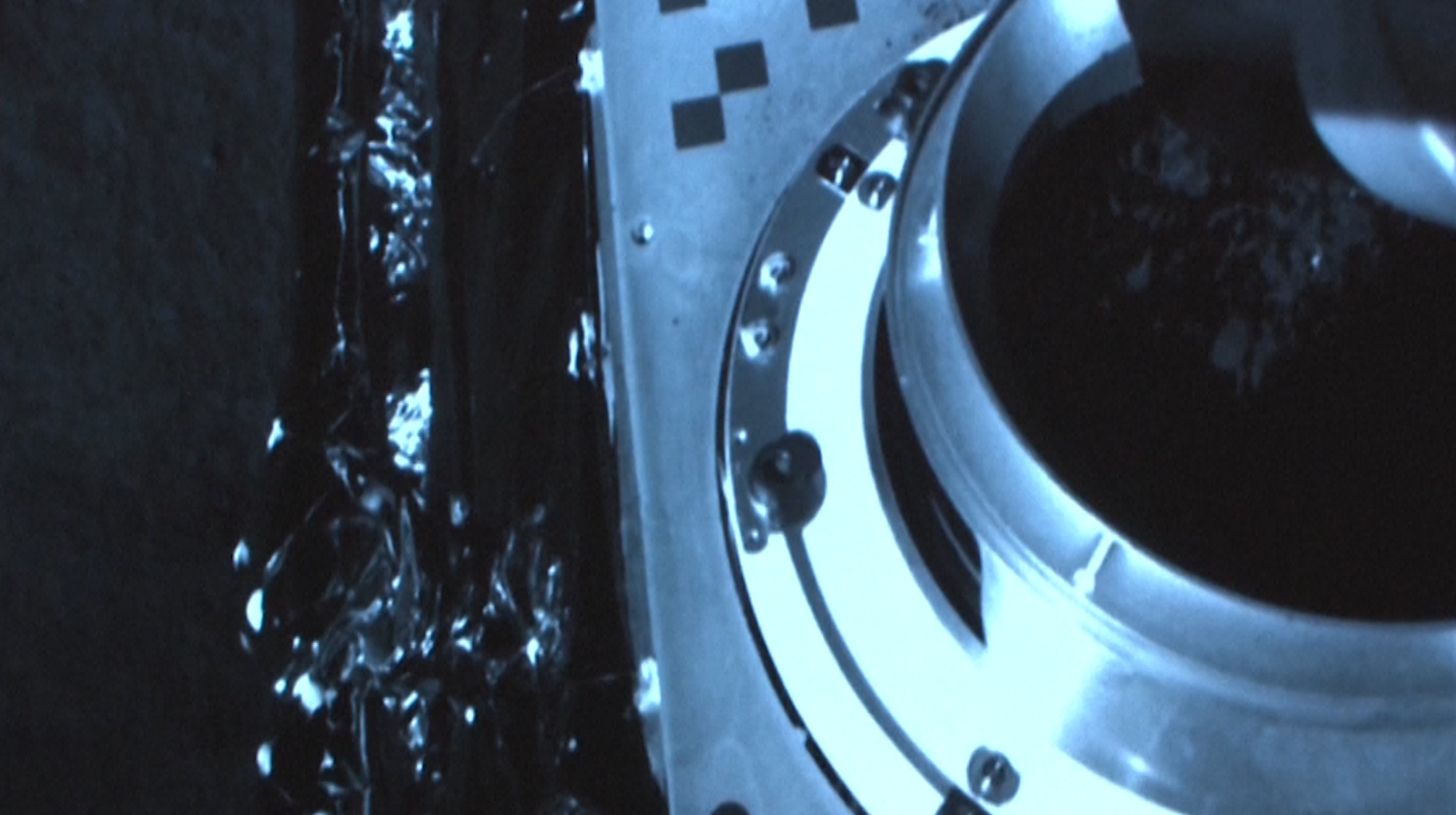
Volcanoes have erupted on the lunar surface within a geologically recent timespan, and the moon could still be volcanically active today, according to tiny glass beads in lunar dirt brought back to Earth by the Chinese Chang'e 5 sample-return mission in December 2020. The discovery could turn what we thought we knew about the evolution of the moon on its head.
We know that the moon had volcanism in the distant past, because we can see the evidence literally all over the face of our nearest neighbor — the dark markings of the famous "man in the moon" are lunar maria, which are vast, volcanic plains dating back three to 3.8 billion years. It was thought that this was the last time the moon was volcanically active.
But, astonishingly, Chang'e 5 brought home evidence that the moon has experienced volcanic eruptions much more recently — just 123 million years ago, give or take an uncertainty of 15 million years.
That still sounds like a long time ago in human terms, but geologically speaking it was just yesterday. It means that the moon may have been volcanically active its whole life, and could still be volcanically active today.
Related: China's Chang'e 5 mission: Sampling the lunar surface
The evidence for the recent volcanism came from three tiny glass beads — just three out of 3,000 in Chang'e 5's sample. A team led by Bi-Wen Wang and Qian Zhang of the Institute of Geology and Geophysics at the Chinese Academy of Sciences in Beijing carefully searched the 0.6 ounces (1.7 grams) of lunar dirt recovered by Chang'e 5 for these needles in a haystack. Glass beads, just 20 to 400 microns in size, can be formed by the violent fury of an asteroid impact, melting and pressurizing rock so it turns to glass. Indeed, these impact-derived beads make up the vast majority of the beads in the sample — unsurprising given the number of impacts evident on the moon in the form of craters. But there's another way to form these beads, too.
"Magma fountains produce volcanic glasses, which have previously been found in samples of the moon's surface," wrote Wang and Zhang's team in their research paper. Certainly, glass beads of volcanic origin have been found on the moon before, but always originating from those magma eruptions billions of years ago. However, from its landing site near an area rich in volcanic domes called Mons Rümker in Oceanus Procellarum ("Ocean of Storms"), Chang'e 5 managed to find three glass beads that are very special indeed, returning them to Earth on Dec. 16, 2020.
"Uranium-lead dating of the three volcanic glass beads shows that they formed 123 million, ±15 million, years ago," wrote Wang and Zhang's team.

Uranium-lead dating involves measuring the radioactive decay of uranium into lead in rock samples over a million years old. In general, the greater the ratio of lead to uranium there is, the older the sample must be for there to have been enough time for all that uranium to decay into lead. Vice versa, the lower the abundance of lead relative to uranium, the younger the sample.
What strengthens the findings is that this is not the first evidence for geologically recent volcanism on the moon. In 2014, NASA's Lunar Reconnaissance Orbiter (LRO) imaged about 70 bizarre features on the surface of the moon called irregular mare patches, perhaps better known as the catchy acronym "IMPs." In fact, the first IMP was photographed from lunar orbit in 1971 by NASA's Apollo 15 astronauts, but at the time it wasn't recognized for what it really was. IMPs are smooth, round, shallow mounds next to patches of rocky, jumbled terrain that lie downslope. Averaging less than a third of a mile across, these features are found on volcanic plains, and at least some appear to be less than 100 million years old, and perhaps even less than 50 million years old. These age estimates come from crater counts — the more craters a surface has, the older it must be, and the smooth slopes are relatively untouched.
Whereas the IMPs are highly suggestive of recent volcanism, the glass beads provide incontrovertible evidence. However, our models of the moon's thermal evolution suggest that its interior should have cooled off long ago following its formation 4.5 billion years ago. Simply put, the inside of the moon shouldn't be warm enough to generate volcanism. So the question now becomes, what is causing it?
"We measured high abundances of rare earth elements and thorium in these volcanic glass beads, which could indicate that such recent volcanism was related to local enrichment of heat-generating elements in the mantle sources of the magma," write Wang and Zhang's team.
These elements, such as potassium, phosphorus, yttrium and lanthanum, can produce heat from radioactive decay, which might be enough to melt rocks in the lunar mantle, at least on a local scale, which could drive modest eruptions.
Related: China makes Chang'e 5 moon samples open to international researchers

Two further questions also come to mind. One is, could this volcanism be active today? Throughout the decades, there have been reports of "transient lunar phenomena," or TLP — ghostly, colored hazes seen to appear over the lunar landscape. Their existence is greatly disputed, since they have not been seen by space probes, but only by amateur astronomers on Earth. While many lunar scientists have dismissed TLP as being due to inclement atmospheric conditions above the observing site on Earth or even just misidentification by the observer, one possible explanation that has been suggested is volcanic outgassing. This had seemed unlikely because of the consensus at the time that the moon was volcanically inert, but the new findings from Chang'e 5, supported by LRO's observations of IMPs, raise the possibility that there could still be volcanic outgassing on the moon. And if lunar volcanism does still exist, could its energy be tapped into by future lunar astronauts setting base on the moon?
While these are still unanswered questions, what now seems certain is that the moon isn't quite as dead as we thought, and in fact might still occasionally awaken from its slumber. A hundred million years ago, Cretaceous-era dinosaurs roamed the Earth, while unbeknownst to them, glowing spots of lava may have been lighting up the moon high above their heads.
The new findings from Chang'e 5 were published on Sept. 5 in the journal Science.







